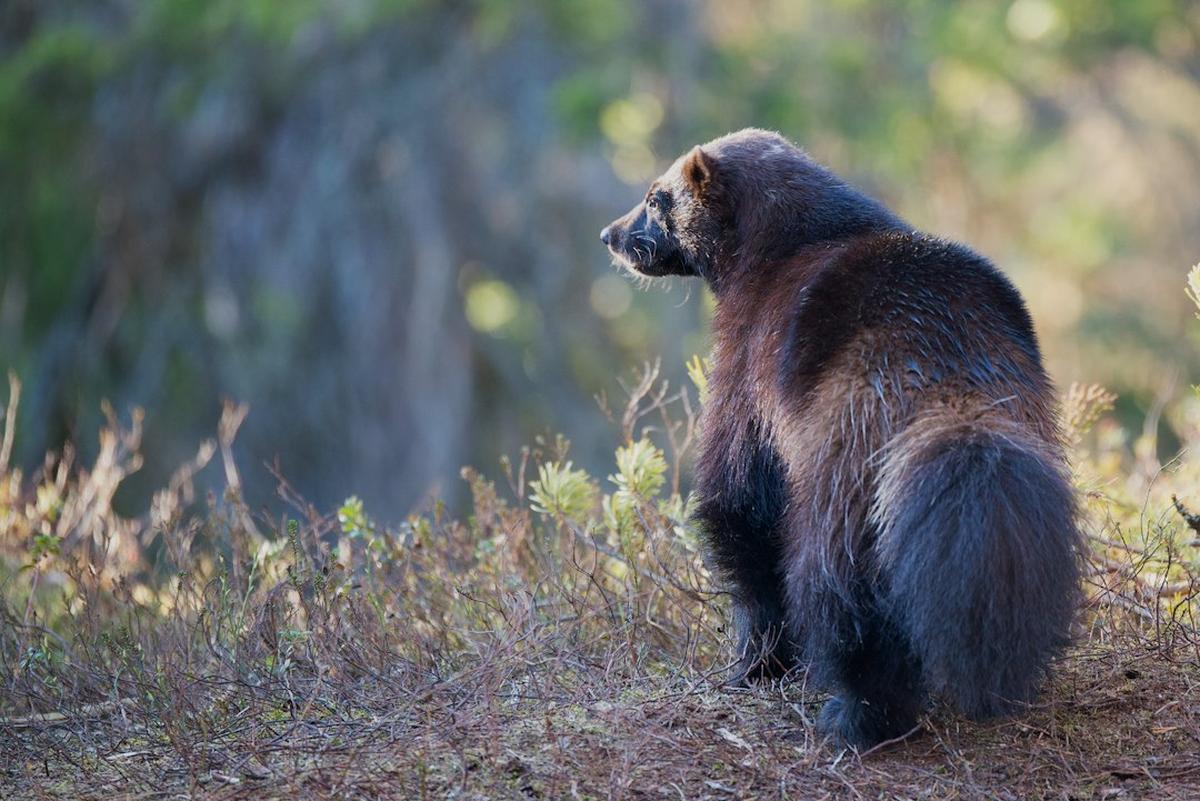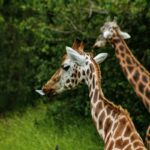Brief Overview of Charles Darwin
Charles Darwin, a 19th-century naturalist, is widely recognized for his revolutionary contributions to the science of biology. Born in England in 1809, Darwin embarked on a five-year voyage around the world on the HMS Beagle in 1831. This journey exposed him to a wide variety of geological features and biological species, stimulating his interest in the origins and diversity of life. His observations and insights culminated in the groundbreaking book, “On the Origin of Species,” published in 1859, which laid the foundation for the theory of evolution.
Introduction to Darwin’s Theory of Evolution
Darwin’s theory of evolution fundamentally changed our understanding of the natural world. The theory posits that all species of organisms arise and develop through the natural selection of small, inherited variations that increase the individual’s ability to compete, survive, and reproduce. Darwin’s theory is a cornerstone of modern biology, providing a unifying explanation for the diversity of life.
The Concept of Descent with Modification
Explanation of Descent with Modification
One of the key concepts in Darwin’s theory is “descent with modification,” which suggests that all living organisms are related to each other through common ancestry. Over generations, species undergo gradual changes in their physical and behavioral traits, leading to new species’ formation. These changes are driven by natural selection acting on random genetic variations within populations.
Examples Illustrating Descent with Modification
Consider the evolution of birds from dinosaur ancestors as an example of descent with modification. Over millions of years, certain dinosaurs developed feathers and wings, modifications that eventually led to the emergence of birds. This process is evident in the fossil record, which shows transitional forms with both dinosaur and bird-like characteristics.
The Role of Descent with Modification in Evolution
Descent with modification plays a crucial role in evolution, explaining both the unity and diversity of life. It accounts for the shared characteristics among species (due to common ancestry) and the differences among species (due to modifications over time). This concept also provides a framework for tracing the evolutionary history of life on Earth.
Overproduction of Offspring
Understanding the Concept of Overproduction
Darwin observed that all species tend to produce more offspring than can survive to adulthood. This overproduction of offspring creates a struggle for survival, as individuals compete for limited resources. Overproduction also ensures that some offspring will survive, even in harsh conditions, and pass on their traits to the next generation.
The Role of Overproduction in Natural Selection
Overproduction is a key factor in natural selection. It leads to competition among individuals, with those possessing advantageous traits having a better chance of survival and reproduction. Over time, these beneficial traits become more common in the population, leading to evolutionary change.
Real-life Examples of Overproduction
A classic example of overproduction is seen in sea turtles. A female sea turtle can lay hundreds of eggs, but only a small fraction of these hatchlings will survive to adulthood. This overproduction ensures that despite high mortality rates, some turtles will survive, reproduce, and pass on their genes.
Limited Resources and Survival
The Concept of Limited Resources in Darwin’s Theory
In Darwin’s theory, the concept of limited resources is central to the process of natural selection. Resources such as food, water, and shelter are often scarce, leading to competition among individuals and species. Those who are better adapted to their environment have a greater chance of securing these resources and surviving.
How Limited Resources Influence Survival and Reproduction
Limited resources directly influence survival and reproduction, two key components of fitness in evolutionary terms. Individuals who can efficiently obtain and use resources are more likely to survive and reproduce, passing on their advantageous traits to their offspring. Over time, these traits become more prevalent in the population, driving evolutionary change.
Examples Demonstrating the Impact of Limited Resources
A well-known example of the impact of limited resources is seen in Darwin’s finches on the Galapagos Islands. Different species of finches have different beak shapes, each adapted to a specific type of food resource. When food is scarce, only those finches with the most suitable beak shape for the available food can survive and reproduce.
The Struggle for Existence
Explaining the Struggle for Existence in Darwin’s Theory
The struggle for existence is a fundamental concept in Darwin’s theory of evolution. Given the overproduction of offspring and the limited availability of resources, not all individuals can survive and reproduce. This leads to a struggle for existence, with individuals competing for resources and mates.
The Role of the Struggle for Existence in Natural Selection
The struggle for existence is the driving force behind natural selection. Those individuals with traits that give them an advantage in this struggle are more likely to survive and reproduce. Over generations, these advantageous traits become more common in the population, leading to evolutionary change.
Case Studies Highlighting the Struggle for Existence
One of the most striking examples of the struggle for existence is seen in the predator-prey dynamics. For instance, cheetahs and gazelles are engaged in a constant “arms race.” Cheetahs, the fastest animals on land, are adapted to catch gazelles. In response, gazelles have evolved to be extremely agile, capable of changing direction quickly to evade predators. This ongoing struggle has shaped the evolution of both species.
Natural Selection and Survival of the Fittest
Defining Natural Selection and Survival of the Fittest
Natural selection, as proposed by Darwin, is the process by which traits that enhance survival and reproduction become more common in successive generations of a population. “Survival of the fittest,” a phrase coined by Herbert Spencer, is often used to describe this process. However, “fittest” in this context does not necessarily mean the strongest or the healthiest. It refers to the individuals who are best adapted to their environment and can leave the most offspring.
How Natural Selection Leads to Evolution
Natural selection is the primary mechanism of evolution. By favoring individuals with advantageous traits, natural selection gradually leads to changes in the population’s genetic makeup. Over time, these changes can result in the formation of new species, a process known as speciation.
Examples of Natural Selection in Action
The peppered moth in England provides a classic example of natural selection. Prior to the Industrial Revolution, the light-colored form of the moth was more common, as it could easily blend with the lichen-covered trees. However, as pollution killed the lichens and darkened the trees, the dark-colored form of the moth became more common due to its increased survival.
Evidence Supporting Darwin’s Theory
Fossil Records as Evidence
Fossil records provide compelling evidence for Darwin’s theory. They show a progression of forms over time, with older fossils being more primitive and younger fossils being more complex. Transitional fossils, which have characteristics of both ancestral and derived species, provide direct evidence for evolution.
Genetic Evidence for Darwin’s Theory
Modern genetics has provided strong support for Darwin’s theory. DNA comparisons among species reveal similarities consistent with common ancestry. Moreover, the discovery of genetic mutations as a source of variation upon which natural selection can act has further strengthened Darwin’s theory.
Evidence from Biogeography
Biogeography, the study of the distribution of species across the planet, also supports Darwin’s theory. The unique wildlife of remote islands, such as the Galapagos, can be best explained by evolution and natural selection. Species on these islands are similar to those on the nearest mainland but have evolved unique adaptations to their isolated environments.
Criticisms and Controversies Surrounding Darwin’s Theory
Major Criticisms of Darwin’s Theory
Despite its wide acceptance, Darwin’s theory has faced criticism. Some argue that it cannot explain complex structures like the eye, which seem to require design. Others question the lack of transitional forms in the fossil record. Moreover, some religious groups reject the theory due to its perceived conflict with creationist beliefs.
Darwin’s Response to Criticisms
In response to criticisms, Darwin acknowledged that his theory was not perfect and that more evidence was needed. He argued that the complexity of structures like the eye could be explained through gradual, step-by-step changes. He also predicted that more transitional fossils would be found as our knowledge of the fossil record improved.
Modern Perspectives on these Controversies
Modern science has largely addressed the criticisms of Darwin’s theory. The discovery of many transitional fossils and the development of the field of evolutionary developmental biology (which explains how complex structures can evolve) have provided strong support for Darwin’s ideas. While conflicts with religious beliefs persist for some, many religious groups have reconciled their beliefs with the theory of evolution.
The Impact of Darwin’s Theory on Modern Biology
Darwin’s Influence on the Study of Evolution
Darwin’s theory has had a profound impact on the study of evolution. It has provided a unifying framework for understanding the diversity of life on Earth. From paleontology to molecular biology, every field of biology now incorporates the principles of evolution in its research.
The Role of Darwin’s Theory in Modern Genetics
Darwin’s theory has also played a crucial role in shaping modern genetics. It has provided a mechanism (natural selection) for the changes in gene frequencies observed in populations over time. Moreover, the concept of descent with modification has guided research into the genetic relationships among species.
Darwin’s Theory and Conservation Biology
In conservation biology, Darwin’s theory helps us understand the importance of genetic diversity for species survival. It informs strategies for the preservation of endangered species and the restoration of ecosystems. By understanding how species have adapted to their environments, we can better predict how they might respond to future changes, such as climate change.
In Summary
Recap of Key Statements Summarizing Darwin’s Theory
In summary, Darwin’s theory of evolution, with its concepts of descent with modification, overproduction of offspring, struggle for existence, and natural selection, provides a comprehensive explanation for the diversity and unity of life on Earth. It has stood the test of time, with over 150 years of research providing strong support for its key tenets.
The Relevance of Darwin’s Theory Today
Today, Darwin’s theory remains as relevant as ever. It continues to guide research in various fields of biology, from understanding the spread of antibiotic resistance in bacteria to predicting the impacts of climate change on biodiversity. As we face global challenges, the insights from Darwin’s theory will be crucial in helping us navigate the future.
Frequently Asked Questions
What is Darwin’s theory of evolution?
Darwin’s theory of evolution posits that all species of organisms arise and develop through the natural selection of small, inherited variations that increase the individual’s ability to compete, survive, and reproduce.
What is meant by “descent with modification”?
“Descent with modification” is a key concept in Darwin’s theory, suggesting that all living organisms are related to each other through common ancestry and that species undergo gradual changes in their physical and behavioral traits over generations.
How does overproduction of offspring contribute to evolution?
Overproduction of offspring leads to competition among individuals, with those possessing advantageous traits having a better chance of survival and reproduction. Over time, these beneficial traits become more common in the population, leading to evolutionary change.
What is the role of limited resources in Darwin’s theory?
In Darwin’s theory, the concept of limited resources is central to the process of natural selection. Resources such as food, water, and shelter are often scarce, leading to competition among individuals and species.
How does natural selection lead to evolution?
Natural selection is the primary mechanism of evolution. By favoring individuals with advantageous traits, natural selection gradually leads to changes in the population’s genetic makeup, eventually resulting in the formation of new species.
What evidence supports Darwin’s theory?
Evidence supporting Darwin’s theory comes from various fields, including paleontology (fossil records), genetics (DNA comparisons and genetic mutations), and biogeography (distribution of species).
References
- Darwin, C. (1859). On the Origin of Species. John Murray.
- Gould, S. J. (2002). The Structure of Evolutionary Theory. Harvard University Press.
- Mayr, E. (2001). What Evolution Is. Basic Books.
- Ridley, M. (2004). Evolution (3rd ed.). Blackwell Publishing.
- Stearns, S. C., & Hoekstra, R. F. (2005). Evolution: An Introduction (2nd ed.). Oxford University Press.








